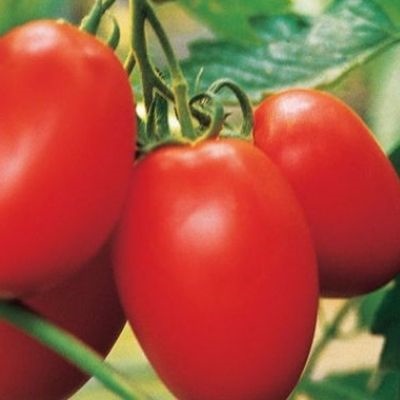
- Authors: Monsanto Holland B. V.
- Year of approval: 2007
- Name synonyms: Yaqui
- Category: hybrid
- Growth type: determinant
- Appointment: fresh consumption, for whole-fruit preservation, for juice, for ketchup and tomato paste
- Ripening period: mid-season
- Ripening time, days: 74-78 days after disembarkation of seedlings
- Growing conditions: for open ground, for film greenhouses
- Marketability: high
Tomato variety Yaki (Yagui) belongs to the first generation hybrids, which was bred by Dutch breeders-practitioners in 2007. Thanks to the painstaking work of specialists, the high-yielding variety has become popular among gardeners and farmers all over the world. The hybrid shows high yields both when grown in greenhouse conditions and in open beds. Oval fruits with dense pulp have a wide range of applications and are used not only for fresh consumption, but also for the preparation of various blanks, as well as for conservation in general.
Description of the variety
Hybrid tomato variety Yaki belongs to the determinant mid-season crops. The size range of an adult bush is from 60 cm to 80 cm. The bushes have a powerful stem frame with medium-sized rich green leaves. The leaf blade is wider than that of most nightshades. The growth of side shoots is limited, which significantly reduces the amount of pinching.
Despite the average size of plants, experts still recommend fixing them to supports. The formation of the first bunches occurs after the appearance of 4-5 leaves. A healthy plant in favorable climatic conditions can form up to 12 bunches. The inflorescences are simple and located across the leaf, the stalks are without articulations.
The main qualities of the fruit
The shape of the fruit of this variety has an elongated plum-like shape with rounded edges. During the period of technical ripeness, tomatoes acquire a deep red hue. A distinctive feature is the absence of greenery at the stalk. Large-fruited fruits can weigh from 106 to 120 grams. The structure of the pulp is dense, juicy and high in sugars. The proportion of dry matter can be up to 6%. The leathery cover is smooth, without protuberances.
Harvesting is easy and effortless. The fruits are removed quickly, while their integrity is fully preserved. The harvested crop has not only a long keeping period, which can be up to 2 months, but also high rates of transportability. Thanks to these properties, tomatoes are grown not only on personal plots, but also on farm lands for subsequent sale.
Advantages:
low percentage of formation of stepchildren;
undemanding garter;
resistance to climatic fluctuations;
mass ripening of fruits;
the ability to grow on an industrial scale and machine assembly;
high productivity;
wide range of applications;
low susceptibility to the most common diseases.
Disadvantages: one-time yield of the crop.
Taste characteristics
The Yaki variety is distinguished by high gustatory characteristics, rich tomato flavor and aroma. Due to these properties and high solids content, the fruits are widely used for the preparation of tomato juice, sauces, ketchup and borsch dressings, and the dense pulp and elastic skin allow the tomatoes to be successfully preserved as a whole and used for fresh salads.
Ripening and fruiting
The period of technical ripeness of the fruit begins 74-78 days after planting the seedlings or 100-105 days after sowing the seeds in the ground. The harvest period is July-August.
Yield
The high-yielding hybrid is distinguished by the amicable ripening of tomatoes, and from a plot of 1 m2, you can collect from 6 kg to 9 kg of fruits.
The timing of planting seedlings and planting in the ground
Despite the huge number of advantages, practical breeders do not recommend sowing this variety directly into the ground, but resorting to the seedling method. Sowing seed directly into the soil will slow down plant growth and significantly reduce yields. It is necessary to plant seeds in planting containers 2-2.5 months before planting seedlings on open beds. Seeds must not be buried, the optimum depth is 10 mm. Germination can be increased by creating a greenhouse effect. After the appearance of 2-3 leaf plates, it is imperative to make a pick.
Experts recommend planting seedlings in the ground during the period when the soil warms up to +12 degrees. The optimum temperature for planting is established at the beginning of May. The nightshade variety bears fruit best after crops such as cereals, legumes, cucumbers and cabbage.

Growing tomato seedlings is an extremely important process, because it largely depends on whether the gardener will be able to harvest at all. All aspects must be taken into account, from seedbed preparation to planting in the ground.
Landing scheme
The planting density of a low-growing plant varies from 3 to 6 bushes per 1 m2 of plot. The planting pattern is 40 cm by 60 cm.

Growing and care
The hybrid tomato belongs to unpretentious plants and is successfully cultivated in various climatic conditions. However, to obtain the maximum amount of fruit, the plant must be regularly watered, fertilized and weeded. Do not forget about good illumination of the area, since shading leads to stretching of the trunks and a decrease in immunity.




A plant needs different micronutrients at each stage of growth. All fertilizers can be divided into two groups: mineral and organic. Folk remedies are often used: iodine, yeast, bird droppings, eggshells.
It is important to observe the rate and period of feeding. This also applies to folk remedies and organic fertilizers.
Disease and pest resistance
Thanks to the hybridization process, the variety is immune to diseases such as gray leaf spot, nematode and bacterial fruit spot. And also tomatoes are rarely affected by Alternaria, verticillosis and fusarium wilt.



























































































